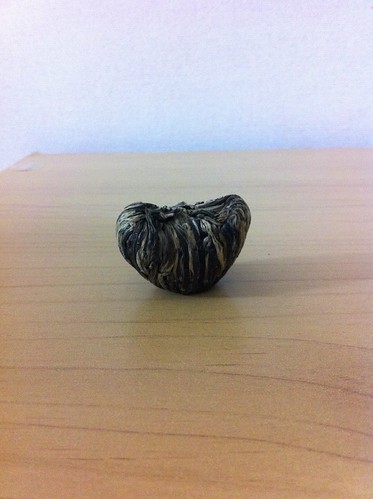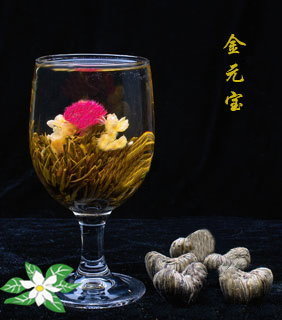Page 1 of 1
Art tea help
Posted: Jun 1st, '11, 14:01
by m147
don't know if this is the place for this post, but here goes.
i got a sample of an art tea with some oolongs that i ordered.
here is a picture
 1000001859.JPG
1000001859.JPG by
m147n, on Flickr
please help me out with this. i have read it's best to brew in a wine glass or brandy snifter. what temps, how much water and so on should i use?
i do not know the name of this particular one, but i have written to the shop and asked them about it. hopefully they will respond and tell me what it is. if you could help me out, much appreciated.
Re: art tea help
Posted: Jun 1st, '11, 14:11
by stainless
I don't know what that is, but to me.. it looks like a fairly new raw pu-erh tuo.
Re: art tea help
Posted: Jun 1st, '11, 14:52
by Drax
Heh, it does rather look like a pu'erh tuo, but by 'art' tea, I'm guessing you mean the more common term 'blooming' tea?
I've never done one. From what I gather, you can brew it like any other tea -- boiling water, preferably in a glass vessel so that you can see the tea bloom and enjoy looking at it. It should probably be a relatively tall vessel, too, as some of them tend to be very 'vertical.'
Often the blooming teas are more visual than... tasty.

Re: art tea help
Posted: Jun 1st, '11, 15:09
by m147
Drax wrote:Heh, it does rather look like a pu'erh tuo, but by 'art' tea, I'm guessing you mean the more common term 'blooming' tea?
I've never done one. From what I gather, you can brew it like any other tea -- boiling water, preferably in a glass vessel so that you can see the tea bloom and enjoy looking at it. It should probably be a relatively tall vessel, too, as some of them tend to be very 'vertical.'
Often the blooming teas are more visual than... tasty.

yes, i think it is one of those 'blooming teas' (didn't know exactly what it was called, thanks). well we'll see what the shop has to say once they get back to me.
Re: art tea help
Posted: Jun 1st, '11, 16:10
by siae
Be sure to post pics when you brew it

Re: art tea help
Posted: Jun 1st, '11, 18:30
by gingkoseto
It looks like some bundled green tea (similar to blooming tea). I saw something like this from time to time in photos. But I've never had any bundled green tea. Please let us know how it tastes when you try it!
A friend of mine told me he got some bundled green tea in Anhui, China, that tastes bitter in the first sip and immediately sweet in the second sip. It sounds almost unbelievable to me but he swears it's true

Re: art tea help
Posted: Jun 1st, '11, 18:34
by gingkoseto
Could it have a flower hidden inside like this one?


Re: art tea help
Posted: Jun 1st, '11, 20:31
by Drax
gingkoseto wrote:A friend of mine told me he got some bundled green tea in Anhui, China, that tastes bitter in the first sip and immediately sweet in the second sip. It sounds almost unbelievable to me but he swears it's true

Heh, that's because in the first sip, it's killing your taste buds....

Well, hopefully we'll find out how this one goes over soon?

Re: art tea help
Posted: Jun 2nd, '11, 02:15
by m147
i'll post the pics as soon as i try it out. i gotta get a decent glass for it though first. so it's off to the 100yen shop for me. haha.
Re: art tea help
Posted: Jun 2nd, '11, 02:52
by IPT
That is a blooming tea. They are made of green tea, generally with flowers on the inside which are either tied together so they float up, or with loose flower petals on the inside which will move around the water as it blooms. They are a green tea, so they should not be brewed with boiling water. They should be brewed as you would normally brew green tea. They are hand mae and there is a lot of artistry involved in making them.
Re: art tea help
Posted: Jun 2nd, '11, 04:53
by ChinesePottery
Yeah, those are marvelous, very entertaining.
I had one once in a while but this post reminded me how long ago that must have been already.
Some made of floating elements combined with a non-floating foundation unfold in your glass to show flower-bridges or little pagoda-like structures.


